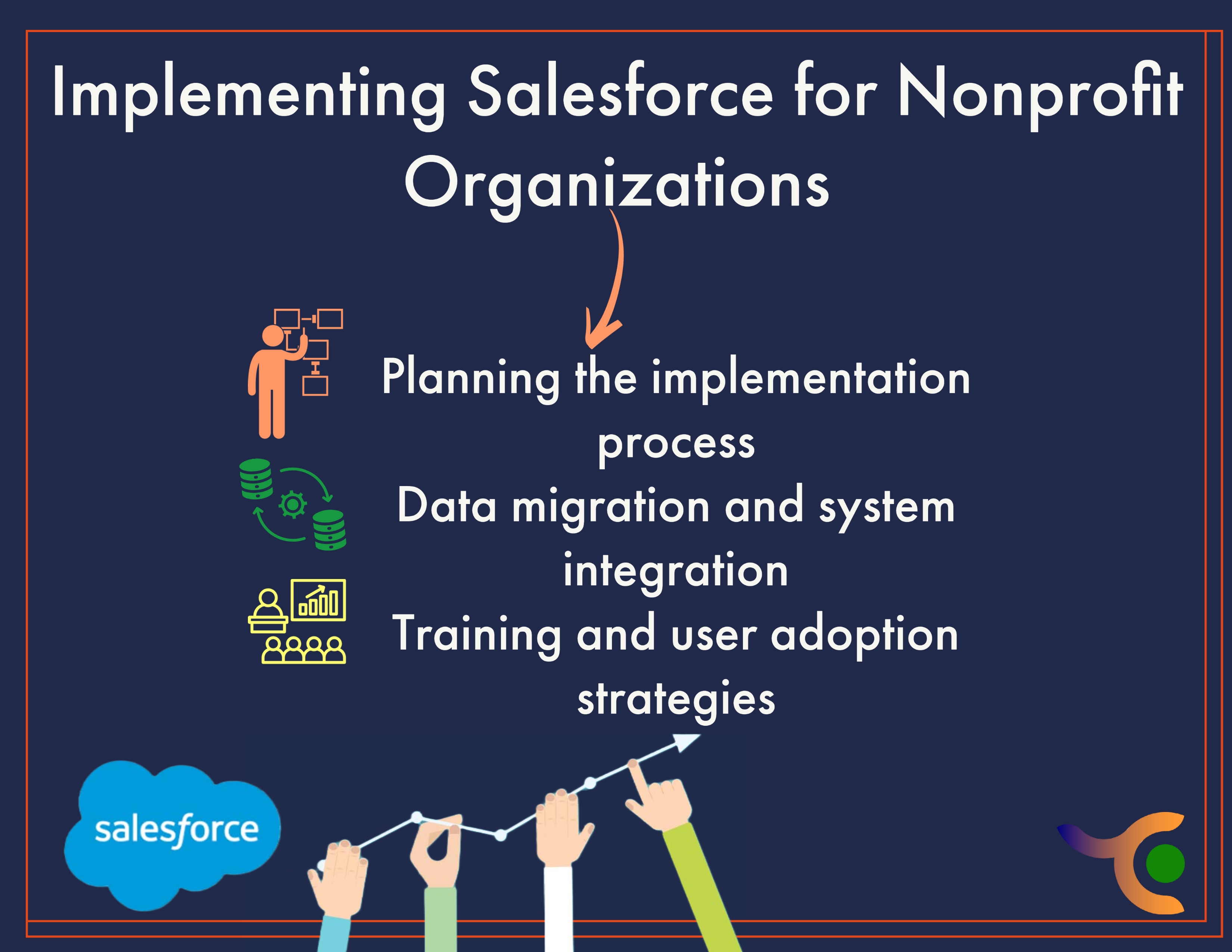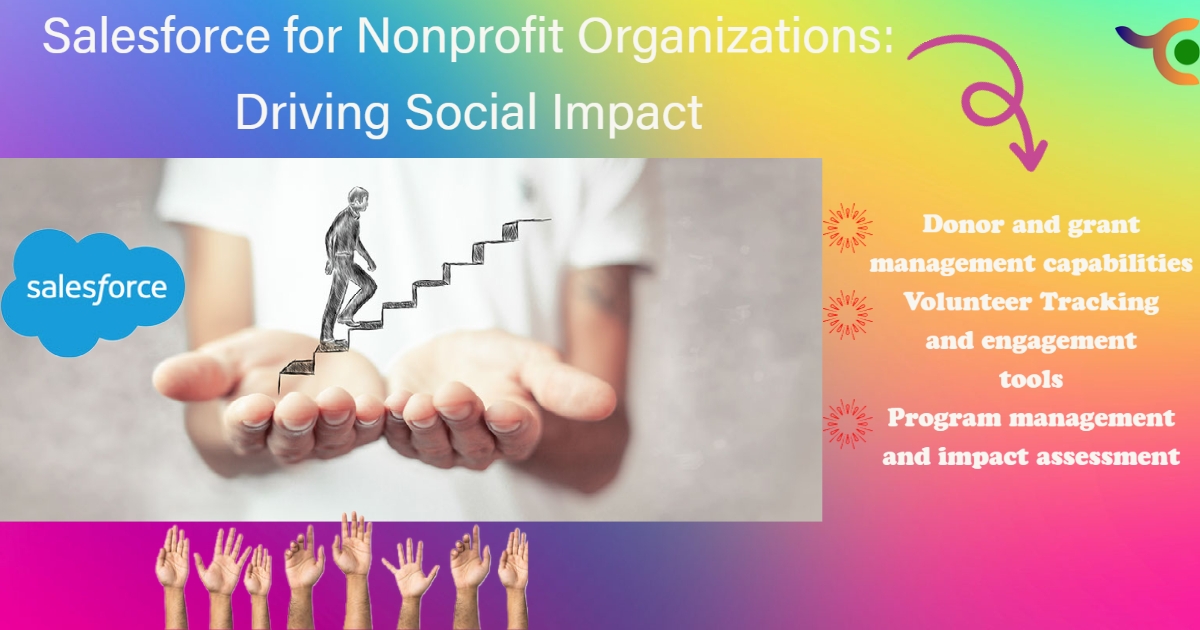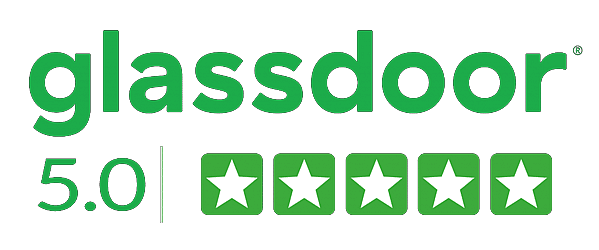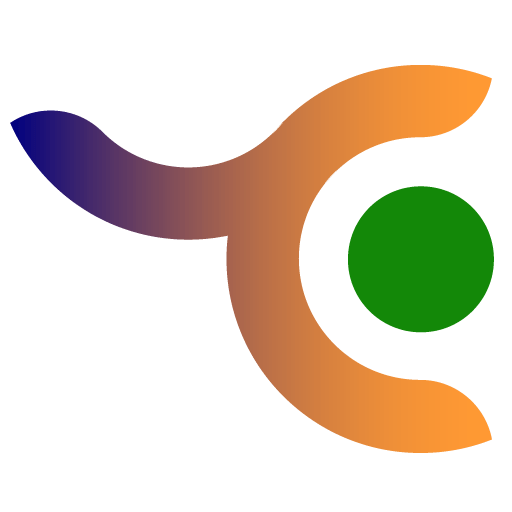Introduction to Salesforce for Nonprofit Organizations
Salesforce is a cloud-based CRM platform that offers a wide range of functionalities for managing relationships with constituents, such as donors, volunteers, beneficiaries, and stakeholders. It allows nonprofit organizations to centralize and organize their data, streamline processes, and management, and gain valuable insights to make informed decisions.
Overview of Salesforce’s Nonprofit Cloud
Salesforce’s Nonprofit Cloud is a comprehensive suite of tools and services designed to empower nonprofit organizations to more effectively manage their operations, engage with constituents, and drive their mission forward. It leverages the power of Salesforce’s customer relationship management (CRM) platform to provide nonprofits with a holistic view of their stakeholders, automate processes, and streamline their operations.
Importance of Technology in driving social impact
Technology plays a vital role in driving social impact by enabling access to information, facilitating collaboration, improving efficiency, raising awareness, fostering innovation, promoting inclusion, and empowering individuals and communities.
- Awareness and advocacy: Technology serves as a powerful platform for raising awareness about social issues and advocating for change simultaneously. Social media platforms, blogs, and online campaigns have the potential to reach vast audiences and amplify voices that may have been marginalized in traditional media channels.
- Access to information and education: Technology has revolutionized access to information and education significantly. In general, the internet and digital devices have made it possible for people around the world to access educational resources, online courses, and information on various social issues.
- Collaboration and networking: Technology has made it easier for individuals and organizations to connect, collaborate, and share knowledge and resources. Online platforms, social media, and communication tools facilitate global collaboration, allowing social impact organizations, activists, and volunteers to work together across geographical boundaries.
- Efficiency and scalability: Technology enables social impact initiatives to operate more efficiently and at a larger scale. Automation, data analysis, and digital tools streamline processes, reduce costs, and enhance productivity.
- Innovation and problem-solving: Technology fuels innovation and enables the development of creative solutions to complex social problems. Technological advancements such as artificial intelligence, blockchain, and renewable energy provide new opportunities to tackle challenges related to poverty, healthcare, education, climate change, and more.
- Inclusion and empowerment: Efforts are being made to ensure that marginalized communities and underserved populations have access to technology and digital skills training.
Introduction to nonprofit organizations-specific features
Nonprofit organizations help in addressing social, environmental, and humanitarian issues. Unlike for-profit entities, nonprofits operate with the primary goal of serving the public interest rather than maximizing profits. To support their unique missions, nonprofit organizations often have specific features and characteristics that set them apart. Hence, we have some key nonprofit-specific features:
- Nonprofits are founded with a clear mission to address a particular social or environmental problem.
- Nonprofits typically qualify for tax-exempt status under the laws of their respective countries.
- They have a board of directors or trustees responsible for overseeing the organization’s operations and ensuring compliance with legal and ethical standards.
- Nonprofits rely on diverse funding sources to sustain their operations and programs.
- Building and maintaining relationships with donors is critical for nonprofits.
- Many nonprofits rely on volunteers who contribute their time, skills, and expertise to support the organization’s activities.
- Nonprofits are expected to maintain a high level of financial transparency.
- Nonprofits often place a strong emphasis on measuring and evaluating their impact.
Key Features and Benefits of Salesforce for Nonprofits
Salesforce offers a robust set of features and benefits for nonprofits, enabling them to streamline their operations, enhance donor relationships, and drive their mission forward. However, there are some key features and benefits of Salesforce for nonprofits:
Donor and grant management capabilities
Donor and grant management capabilities refer to the processes, tools, and systems used by organizations to effectively manage their donors and grants significantly. These capabilities are essential for nonprofit organizations, foundations, and other entities that later rely on funding from donors and distribute grants to support their programs and initiatives.
- Donor Relationship Management: This capability involves maintaining a comprehensive database of donors, their contact information, giving history, preferences, and other relevant details.
- Grant Application and Management: This capability focuses on managing the entire lifecycle of grants, starting from the application process through to grant approval, monitoring, and reporting.
- Fundraising and Donor Engagement: This capability involves planning and executing fundraising campaigns and strategies to attract new donors and retain existing ones.
- Grant Monitoring and Evaluation: This capability entails tracking the progress of funded programs or projects, monitoring financial disbursements, and evaluating the impact of grants.
- Financial Management and Reporting: Effective financial management is crucial for donor and grant management.
- Compliance and Accountability: Donor and grant management systems need to have features that ensure compliance with legal and regulatory requirements.
- Integration and Automation: Donor and grant management systems often need to integrate with other software solutions, such as customer relationship management (CRM) systems, accounting software, or project management tools simultaneously.
Volunteer Tracking and engagement tools for Nonprofit Organizations
There are several volunteer tracking and engagement tools available that can help organizations manage their volunteer programs more effectively.
- VolunteerMatch is a widely-used platform that connects nonprofits with volunteers.
- Better Impact is a volunteer management software that allows organizations to track and schedule volunteers, manage volunteer profiles, and communicate with volunteers.
- Track It Forward is a cloud-based volunteer management software that simplifies volunteer tracking and engagement markedly.
- Giveffect is a comprehensive nonprofit software that includes volunteer management features.
Program management and impact assessment features
Program management and impact assessment are vital aspects of effective project and organizational management. Therefore, Software solutions designed for these purposes offer a range of features to support these activities.
- Program management software typically includes goal-setting capabilities to define clear objectives, milestones, and key performance indicators particularly.
- Timeline and Gantt chart functionalities provide visual representations of program timelines, dependencies, and critical paths, aiding in planning and progress monitoring.
- Risk and issue management features help identify, assess, track, and mitigate risks and issues throughout the program lifecycle specifically.
- To assess program impact, surely software solutions offer performance monitoring and reporting capabilities correspondingly.
- Evaluation and feedback mechanisms allow at least for stakeholder feedback, surveys, and assessments to continuously improve program effectiveness.
- Integration and data management features enable seamless data exchange with other systems, ensuring data integrity and facilitating information flow particularly.
- Scalability, training resources, and customer support are also important considerations. Hence, the software should be scalable to accommodate programs of varying sizes and complexities.
- Comprehensive training materials and responsive customer support assist users by all means in effectively implementing and utilizing the software.
Implementing Salesforce for Nonprofit Organizations

Implementing Salesforce for nonprofit organizations can greatly enhance their operations and streamline their processes altogether.
Planning the implementation process
Planning the implementation process for a project or initiative is crucial for its success. Hence, there are some steps to consider when particularly planning the implementation process:
- Define the objectives
- Identify key stakeholders
- Develop an implementation plan
- Allocate resources
- Build a project team
- Establish a communication plan
- Mitigate risks
- Test and pilot
- Training and change management
- Monitor and evaluate
Every implementation process is unique, and the specific steps may vary depending on the nature and scope of the project consequently. In addition, Adapt these guidelines to suit your particular circumstances, and remain flexible throughout the process to accommodate unforeseen challenges and opportunities.
Data migration and system integration
Data migration and system integration are two critical processes in the field of information technology that involve the movement and consolidation of data between different systems or platforms correspondingly. Therefore, Data migration and System Integration are defined as:
- Data migration involves moving data from legacy systems to modern systems, transitioning from on-premises infrastructure to cloud-based solutions, or consolidating data from multiple sources into a unified database.
- System integration involves combining different software, hardware, and network systems to create a unified and cohesive infrastructure that can seamlessly exchange data and operate as a single entity.
Training and user adoption strategies
Training and user adoption strategies are important considerations when introducing new technologies, tools, or systems within an organization significantly. However, there are some strategies to effectively train users and promote user adoption:
- Needs Assessment
- Clear Communication
- User-Centric Training
- Hands-on Learning
- Train-the-Trainer Approach
- Continuous Support
- Gamification and Incentives
- Management Support
- Feedback and Iteration
- Monitoring and Evaluation
Moreover, by implementing these strategies, organizations can improve the effectiveness of their training programs and increase user adoption of new technologies or systems.
Customizing Salesforce for Nonprofit Organization’s Needs
Salesforce offers a range of customization options that can be tailored to meet the specific needs of nonprofit organizations. All in all, there are some key considerations and customization features you can explore when setting up Salesforce for your nonprofit:
Tailoring Salesforce for specific nonprofit workflows
Tailoring Salesforce for specific nonprofit workflows involves customizing the platform to meet the unique needs and processes of a nonprofit organization simultaneously. Salesforce provides various tools and features that can be leveraged to streamline operations, manage relationships with donors and volunteers, and track program outcomes.
Creating custom fields and objects
Creating custom fields and objects typically refers to the process of defining new data structures and their associated fields within a software system, such as a database or a customer relationship management (CRM) platform.
- Determine the specific data you need to store and the relationships between different data elements additionally.
- Select the software system or platform at this point where you want to create the custom fields and objects.
- Log in to the administration interface of the chosen platform and navigate to the customization or setup section. E.g. In Salesforce we can use “Customize,” “Custom Fields,” or “Object Manager”.
- If you need to define entirely new data structures, you’ll create custom objects altogether.
- If you want to add new fields to existing objects, find the option to create custom fields. Define the field’s data type (e.g., text, number, date), length, and any validation rules.
- After creating custom fields and objects, it’s essential to thoroughly test them to ensure they function as expected. By the same token, Validate data entry, relationships, and any custom logic associated with the fields.
Designing customized reports and dashboards
Designing customized reports and dashboards identically involves a systematic approach to collecting, analyzing, and presenting data in a meaningful and visually appealing way.
- Determine the Purpose: Clearly define the purpose of the report or dashboard. Understand the target audience, their needs, and the specific goals they want to achieve.
- Identify Key Metrics: Identify the key performance indicators (KPIs) and metrics that are relevant to the purpose of the report or dashboard.
- Data Collection and Integration: Gather the necessary data from various sources, such as databases, spreadsheets, APIs, or external systems.
- Define Report Structure: Determine the structure and layout of the report or dashboard. Decide on the sections, visualizations, and components that will be included. Henceforth, consider using charts, graphs, tables, and other visual elements to present the data effectively.
- Choose Visualization Tools: Select appropriate visualization tools or software that can accommodate the chosen components and provide flexibility in designing the report or dashboard.
- Design Visual Elements: Create visually appealing and intuitive visualizations furthermore that effectively convey the data. However, Choose appropriate chart types, colors, labels, and fonts to enhance readability and comprehension.
- Arrange and Organize: Arrange the visual elements in a logical and intuitive manner. Group related components together and use clear headings and subheadings to guide the audience through the report or dashboard.
- Incorporate Interactivity: Add interactive features, such as filters, drill-down options, and tooltips, to allow users to explore the data and extract insights based on their specific needs.
- Test and Refine: Test the report or dashboard with a representative sample of the target audience to gather feedback.
- Publish and Distribute: Once the customized report or dashboard is finalized, publish it in a suitable format, e.g. PDF, HTML, or an online platform.
Additionally, it is crucial to continuously monitor the effectiveness of the customized reports and dashboards and make updates or modifications as needed to ensure their relevance and usefulness over time.
Measuring and Analyzing Social Impact with Salesforce
Salesforce, as a powerful customer relationship management (CRM) platform, can be utilized to measure and analyze social impact explicitly.
Defining key performance indicators (KPIs)
Key Performance Indicators (KPIs) are measurable metrics that organizations use to evaluate their performance and progress toward specific goals and objectives. KPIs help businesses monitor and analyze various aspects of their operations to determine if they are on track or need improvement.
- Identify your objectives
- Align KPIs with objectives
- Make KPIs measurable
- Define specific metrics
- Set targets
- Assign responsibility
- Regularly track and analyze
- Adapt and refine
KPIs should be meaningful, aligned with your objectives, and provide actionable insights eventually. They play a vital role in monitoring performance evidently, driving improvement, and guiding decision-making within an organization.
Impact measurement and evaluation methodologies
Impact measurement and evaluation methodologies are used to assess the effects and outcomes of programs, projects, interventions, or policies. These methodologies especially help to determine whether the intended goals and objectives have been achieved and provide insights into the effectiveness and efficiency of the initiatives.
There are some commonly used impact measurement and evaluation methodologies:
- Logic models
- Outcome mapping
- Theory of Change
- Randomized Control Trials
- Quasi-experimental designs
- Surveys and questionnaires
- Cost-benefit analysis
- Social Return on Investment
- Participatory evaluation
- Data analytics and big data
Using Salesforce for data-driven decision-making
The effectiveness of Salesforce’s data-driven decision-making wholly depends on the quality and accuracy of the data emphatically. It is crucial to ensure data integrity, maintain data hygiene, and regularly evaluate and update your data management processes to derive meaningful insights from Salesforce and make informed decisions.
- Salesforce provides a unified platform to store and manage customer data, including contact information, interactions, and purchase history.
- Salesforce offers robust reporting and analytics capabilities correspondingly that allow you to extract valuable insights from your data.
- In general, Salesforce’s forecasting features help predict future sales based on historical data, opportunity stages, and other relevant factors.
- Salesforce’s marketing automation tools, such as Marketing Cloud and Pardot, enable you to automate and personalize marketing campaigns based on customer data.
- Salesforce Einstein, the built-in artificial intelligence (AI) capability, leverages machine learning algorithms to provide intelligent insights and recommendations.
- Salesforce’s collaborative features, such as Chatter and Workflows, facilitate communication and streamline processes across teams consequently.
Conclusion: Empowering Nonprofits with Salesforce
In conclusion, Salesforce offers a range of benefits for nonprofits, helping them streamline their operations, enhance their fundraising efforts, and effectively manage their relationships with constituents.
Are you a nonprofit organization looking to amplify your social impact and drive meaningful change? Don’t miss out on the incredible opportunities offered by Salesforce for Nonprofit Organizations!
Take the next step in advancing your mission and achieving your goals certainly. Harness the power of Salesforce’s cutting-edge technology and tailored solutions specifically designed for nonprofits. With Salesforce, you can basically transform your organization’s effectiveness, engagement, and outcomes additionally.
- Don’t wait another day to supercharge your nonprofit’s social impact. Salesforce for Nonprofit Organizations is your gateway to enhanced efficiency, deeper engagement, and greater outcomes.
- Take action now! Visit our website,https://itservices.tricolorinitiatives.com/ schedule a consultation accordingly, or request a demo to start your transformational journey with Salesforce. Together, let’s drive social impact and create a better world for all altogether.


